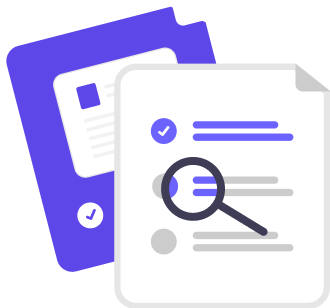New and Improved Rewards at Work Dissertation Example
New and Improved Rewards at Work. Determine how innovations in employee benefits can improve the overall competitive compensation strategy of the organization.
1. In the modern day, Human Resource (HR) professionals and administrators experiment with innovative forms of benefits in the workplace in an attempt to bring into line workers’ interests with the organizational goals. The rewards that an organization provides is an essential element in ensuring the organization remains at a competitive advantage through having employees that are dedicated and motivated to give their best in what they do. Additionally as the variations in workforce increases in the modern day, employers must recognize and tackle the diverse needs of their staff to endure, thrive, and compete effectively (Shield et al., 2015). For example, employees today seek to know the innovative benefits that an organization offers before wanting to work with them. In the recruitment proves, new workers ask about the creative rewards to weigh whether or not they can sustain an excellent working environment and personal lives.
To sustain good talent and performance, companies have to comply with the varied ways of doing business and rewarding employees (Anderson et al., 2014). Workers have variable needs, and corporations have to motivate them with comprehensive rewards. Thus, they must look for innovative techniques of engaging staff that inspire and support their dedication and enhance performance (Wilton, 2016). The innovations in worker benefits can increase the overall competitive compensation strategy of the company as it attracts and retains good talent.Thus, an absence of innovative benefits may cost a company a good employee. The innovative rewards influence the way staff feels about their work (Wilton, 2016). Therefore, corporations must develop creative benefits for their employees to sustain their competitive advantage.
2. Explain how innovative benefits could be tied to specific jobs
With the state of the current economy characterized by increasing competition and variable pay rates as well as the market price of employment, organizations have to put in place measures that would allow them to have a competitive advantage. It is possible to solve the need to employ the best-qualified employees versus competitive restraints through tying benefits to specific jobs (Wilton, 2016). Tailored rewards can improve a worker’s satisfaction with their job. The innovation of benefits has a significant impact on the employees’ morale, contentment, and motivation. For example, the employer can ensure that the worker’s pay and rewards match that which competitors in the industry offer for the specific job (Bhuvanaiah & Raya, 2014). Offering customized benefits aligned with the particular positions can be effective through a structure that seeks to reward job performance, influence specific behavior, and instill pride in a corporation.
It is essential to note that each employee should get fair treatment and rewards opportunities regardless of their position when designing benefits tied to specific jobs. Hence, the employer should take surveys to become familiar with the needs of the workers at different levels. Being aware of the desires of the employees makes it easier for the organization to tailor benefits to specific jobs (Shield et al., 2015). For example, the employer could reward individuals working in the Information Technology (IT) department with more far-reaching vision insurance. In a department where the employees spend most of their time on the desks, the company could provide gym membership. Hence, tying benefits to specific jobs requires the employer to conduct a survey and identify the needs of the employees in various units of the company.
3. Critique the effectiveness of equity-based rewards systems versus those with more creative approaches
Equity-based rewards refer to what the employee gets in their bank account including salary, bonuses, commissions, paid leave, and overtime among others. Innovative awards on the other side are a component of the total benefits package besides the direct pay, for example, health insurance, club memberships, pension plans, and sponsored entertainment packages (Schlechter et al., 2015). Organizations utilize equity-based rewards to motivate the workers to perform better. The rewards system, therefore, develops motivation, offer tax advantages, attract and retain employees. There is no denying that most individuals seek to know how much money they will be getting in their bank accounts before taking a job (Anderson et al., 2014). Workers tend to remain in organizations that offer more equity-based rewards that help them sustain a healthful lifestyle.
Employers who seek to supplement the equity-based compensation tend to utilize more innovative approaches. The technique helps in developing commitment among the employees in the organization. The equity-based rewards tend to care more about giving the worker more money while innovative benefits seek to look at other factors in the worker’s life such as spending more time with their families, better healthcare, and building relationships in the organization (Schlechter et al., 2015). Hence, the employee is more likely to feel that the company cares about them when there is the use of innovative rewards system than in the case of only equity-based compensation. Therefore, both rewards systems target developing employee motivation, dedication, as well as attract and retain good talent. The choice of the technique to utilize depends on the organizational strategy, mission, and vision. Both types of rewards can be useful when paired with the appropriate communication approach as well as the needs of the employees.
4. Discuss the key elements of integrating innovation into a traditional total rewards program.
The integration of innovative benefit plans into a traditional total rewards approach is possible through various policies, schemes, and practices. The programs could comprise of adoption aid, career strategizing, and peer support groups that would suit the employees’ needs. Schemes and practices may embrace flexible work schedules, group insurance covers, and sick family days. The innovative practices should align with the organizational culture in a manner that makes the unique thus attracting and retaining good talent (Anderson et al., 2014). Therefore the critical elements in integrating innovation into a traditional total rewards program include company culture, attraction, motivation, retention, and external factors (Wilton, 2016). By factoring in the elements in the integration, process employers can combine innovative and traditional rewards system to satisfy their workers. For instance, external factors include initiatives that competitors in the same industry take; the organization should ensure their benefits match those of rival companies to avoid losing staff.
According to Bhuvanaiah and Raya (2014), employee engagement is an essential factor in organizational performance. Traditional total rewards programs do not promote worker engagement. Innovative benefits on the other offer employees intangible compensations to content them. Fulfilled employees are more productive than unsatisfied ones. Thus modern employers must recognize the fact that it takes more than just the money that traditional rewards offer to retain talented employees and have a competitive advantage. Salaries and health care covers are the main elements of conventional benefits systems and have to be a part of any total rewards system (Schlechter et al., 2015). Hence, other than providing competitive salaries, organizations should offer their workers tailored benefit schemes that suit their various needs. The customized benefits are the key to attracting, retaining and motivating workers.
5. Recommend a process that optimizes an employee-based suggestion program to continually refresh the total rewards of the organization.
An efficient process would be one that augments an employee-based idea program to persistently invigorate the total rewards of the company through focusing on the business market that would provide essential growth and development opportunities, habitual revenues, and the opening to lead (Bhuvanaiah & Raya, 2014). The process should include various elements such as commitment to offering quality services. Employees often compare what their company provides versus others, thus, the benefits program should consist of an approach whose primary goal is to provide world-class experiences. The employer should start off with an emphasis on workforce programs that are an integration of investment with diverse but complementary targets (Wilton, 2016). The next initiative in the process would be to ensure the plan matches the financial realm of the business, that is, cost-effective. It is then necessary to create a framework that focuses on the needs of the employees depending on the different segments of the company that they work. It is also vital to develop a survey system that would evaluate the changing needs of the workers and offer insights that would allow the employer to tailor rewards to suit specific jobs. The organization has to ensure that there is fairness in the allocation of the total rewards system and every step of the process (Shield et al., 2015). Lastly, it is essential to note that it is impossible to meet the needs of every individual thus requiring the employer to create a balance through the provision of sensible and holistic rewards. Therefore, the process would be one that incorporates technology to improve products and services available. Hence, it would attract and retain talented employees who are dedicated to attaining organizational goals and put the company at a competitive advantage (Shield et al., 2015). It should be able to add the worth of the employee by availing a wide of mission-critical, needs-based and cost-effective benefits through an effective communication approach.
References
- Anderson, N., Potočnik, K., & Zhou, J. (2014). Innovation and creativity in organizations: A state-of-the-science review, prospective commentary, and guiding framework. Journal of Management, 40(5), 1297-1333.
- Bhuvanaiah, T., & Raya, R. P. (2014). Employee engagement: Key to organizational success. SCMS journal of Indian management, 11(4), 61.
- Schlechter, A., Thompson, N. C., & Bussin, M. (2015). Attractiveness of non-financial rewards for prospective knowledge workers: An experimental investigation. Employee Relations, 37(3), 274-295.
- Shields, J., Brown, M., Kaine, S., Dolle-Samuel, C., North-Samardzic, A., McLean, P., … & Plimmer, G. (2015). Managing Employee Performance & Reward: Concepts, Practices, Strategies. Cambridge University Press.
- Wilton, N. (2016). An introduction to human resource management. Sage.
See the Standard, Embrace the Exceptional! View our showcased work and envision yours, elevated to new heights of uniqueness and excellence.
Let us craft an upgraded and one-of-a-kind assignment just for you.
 Order Now
Order Now
